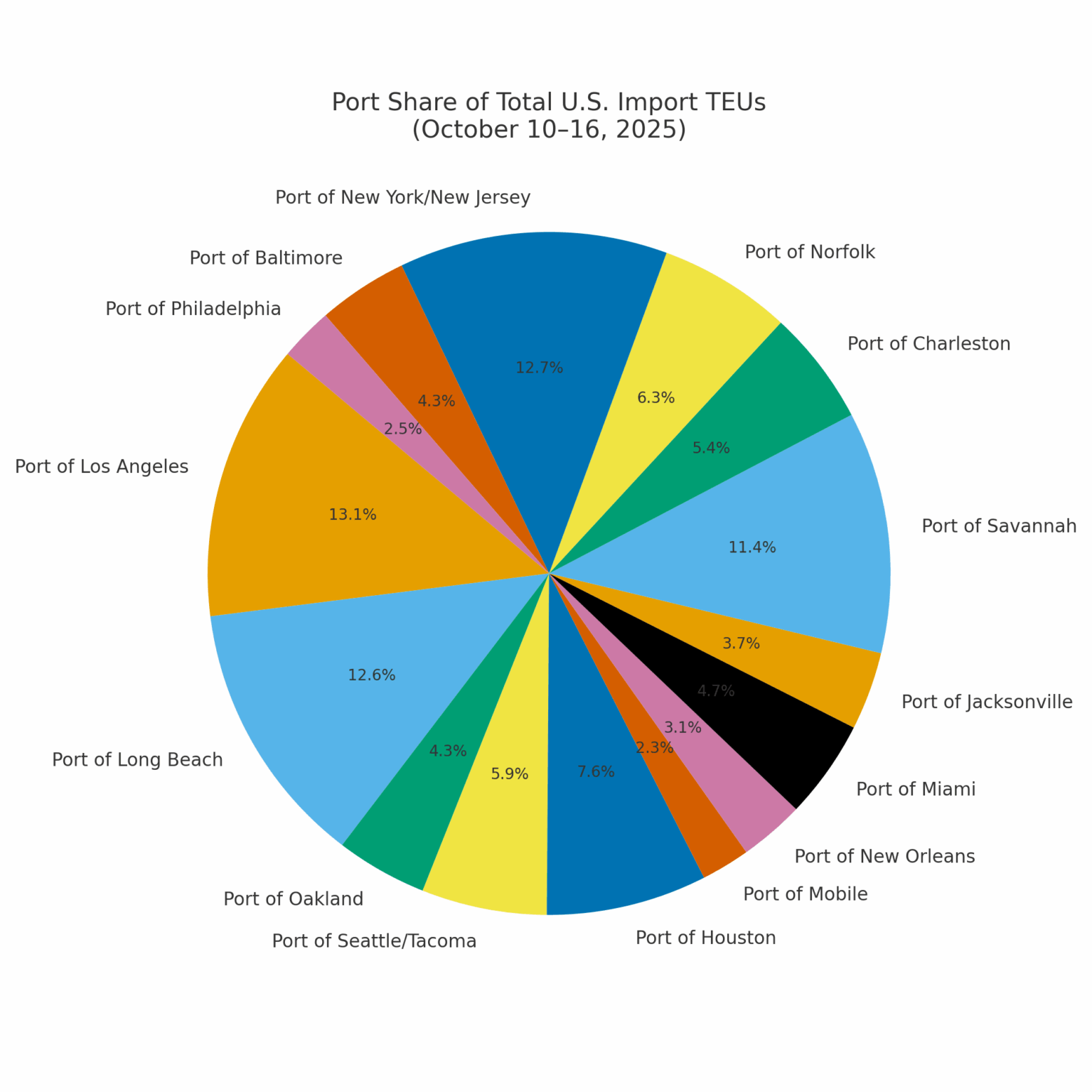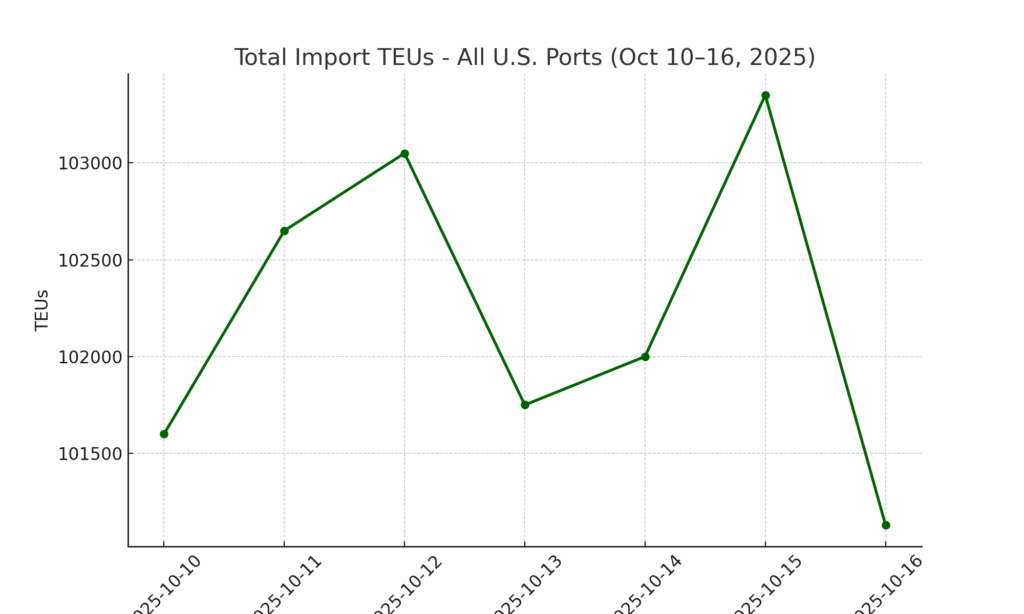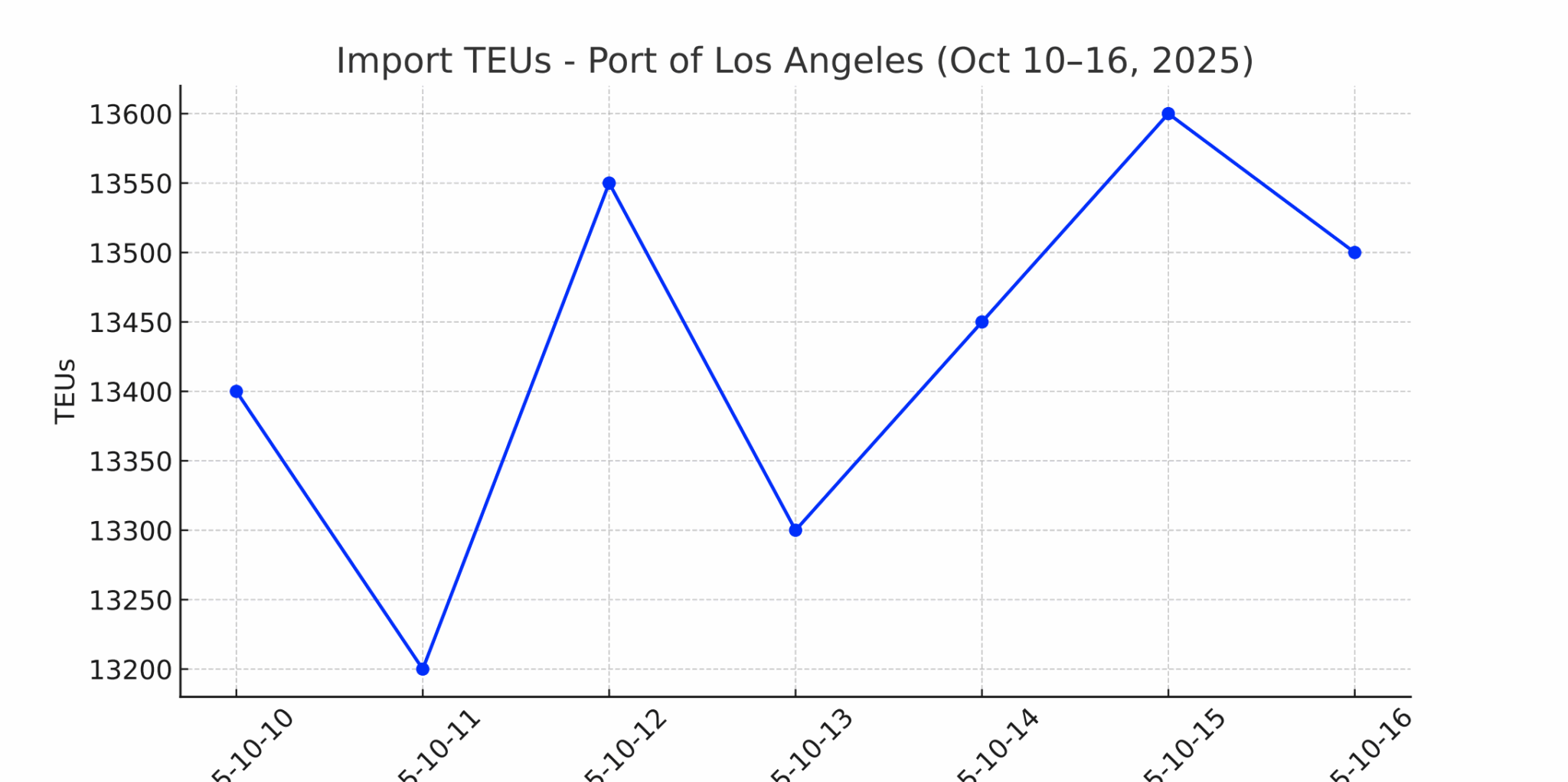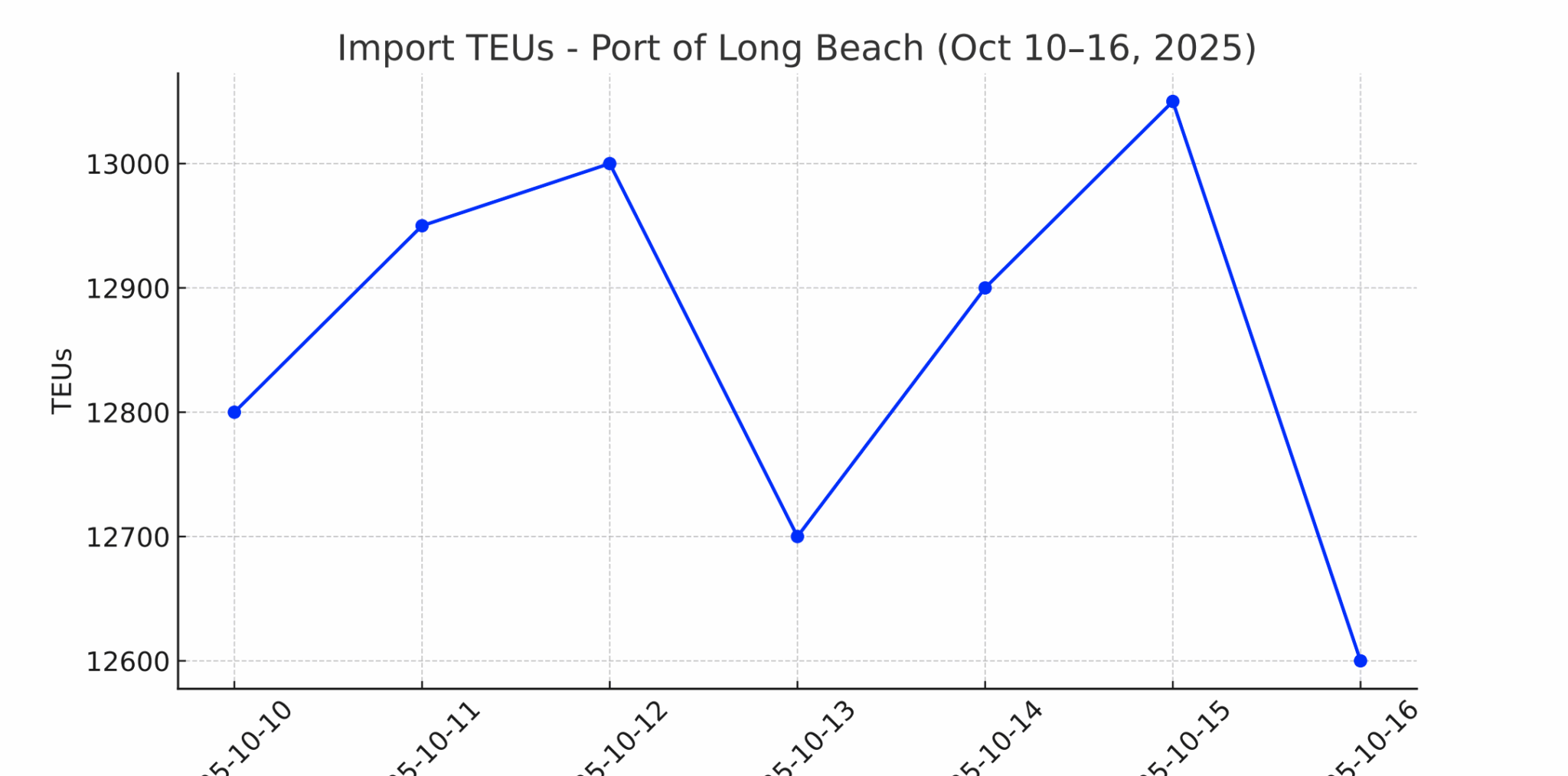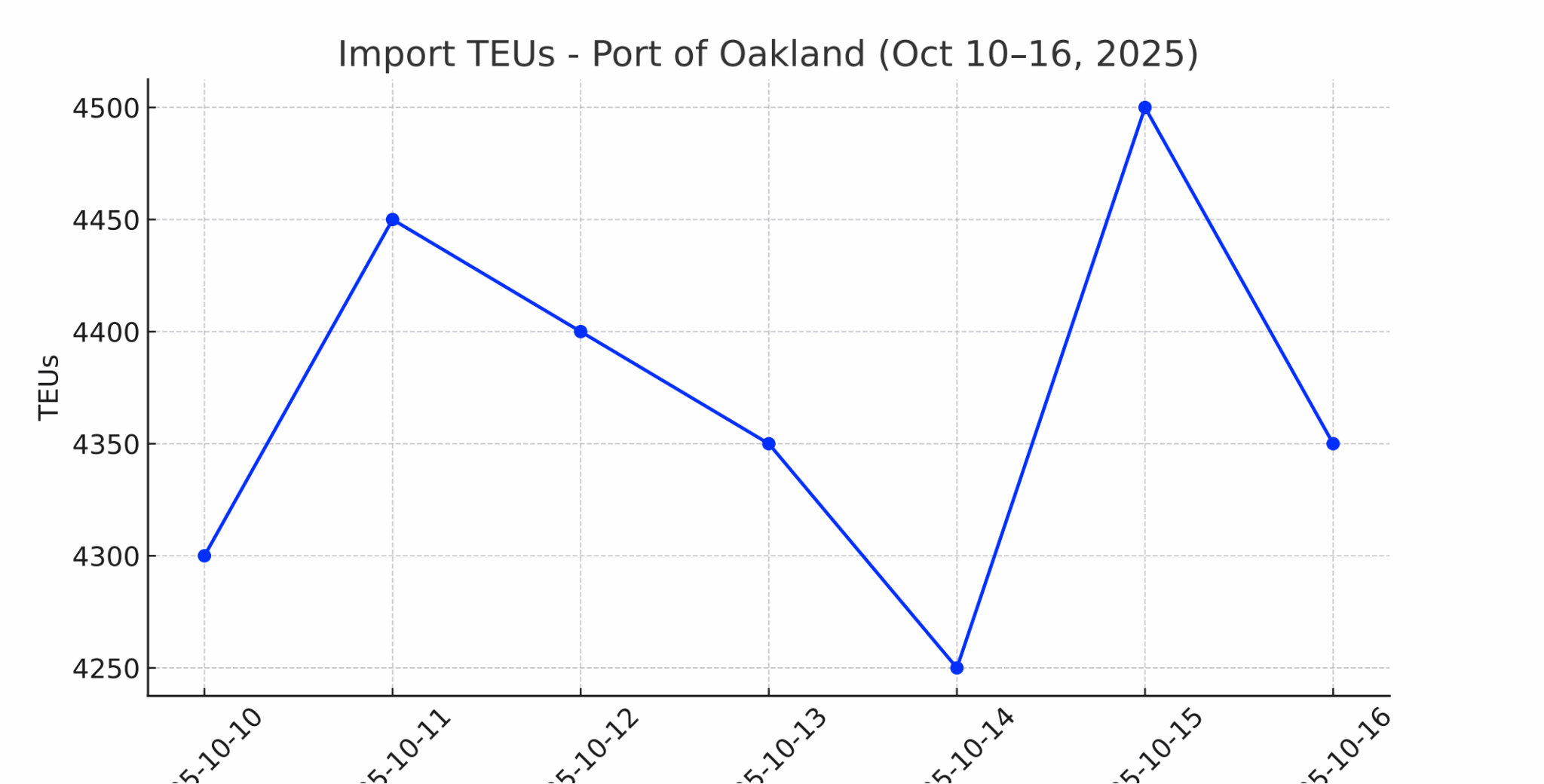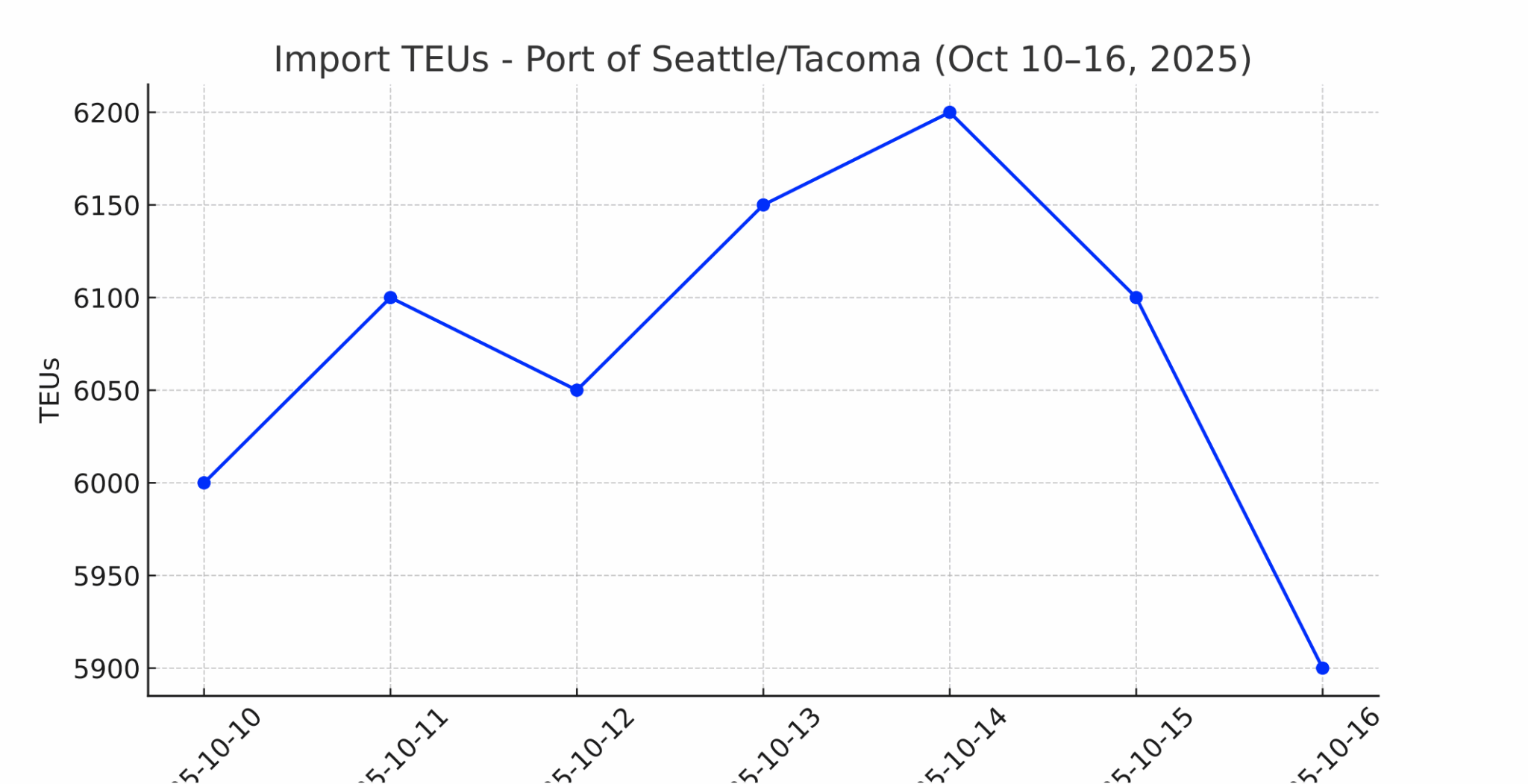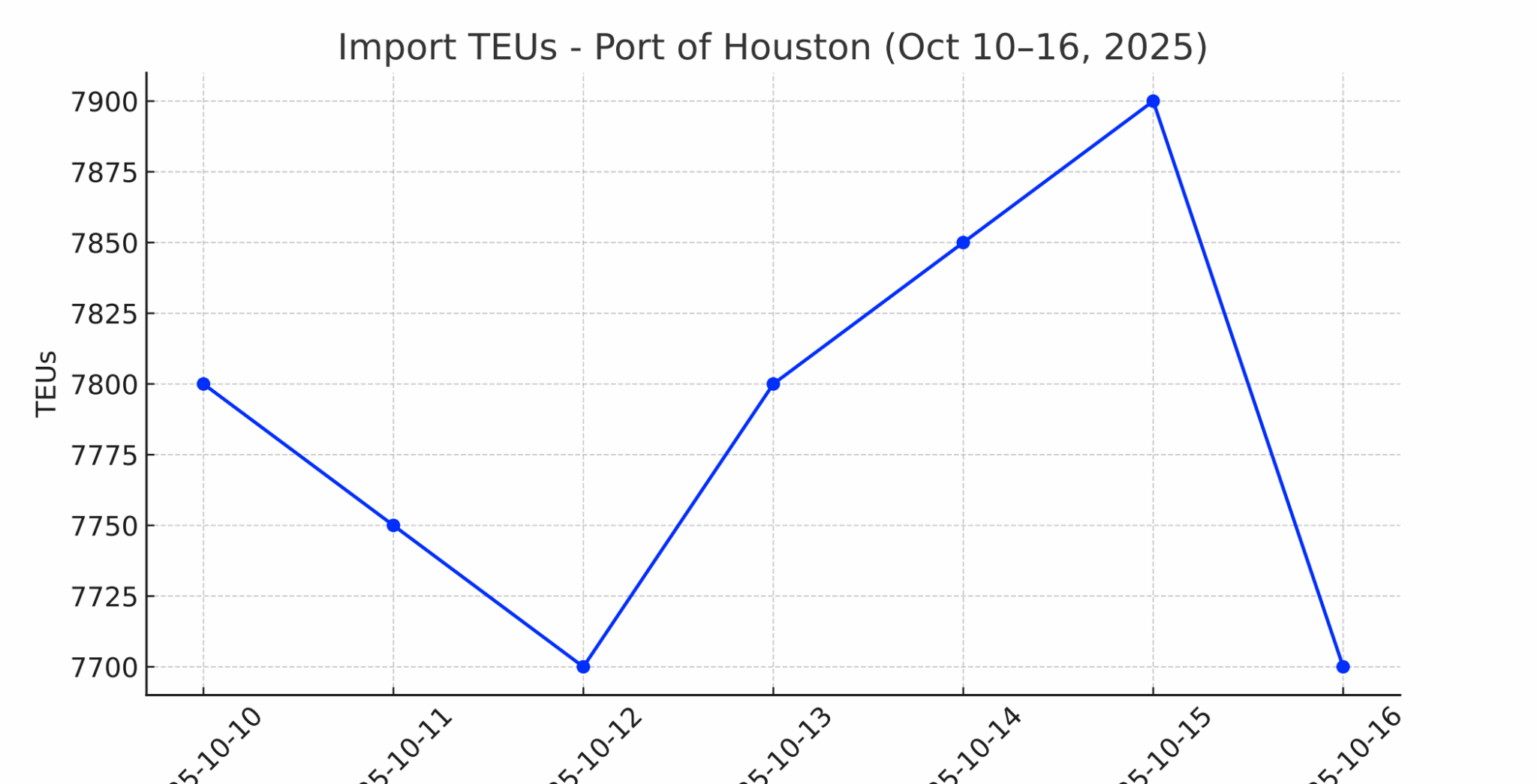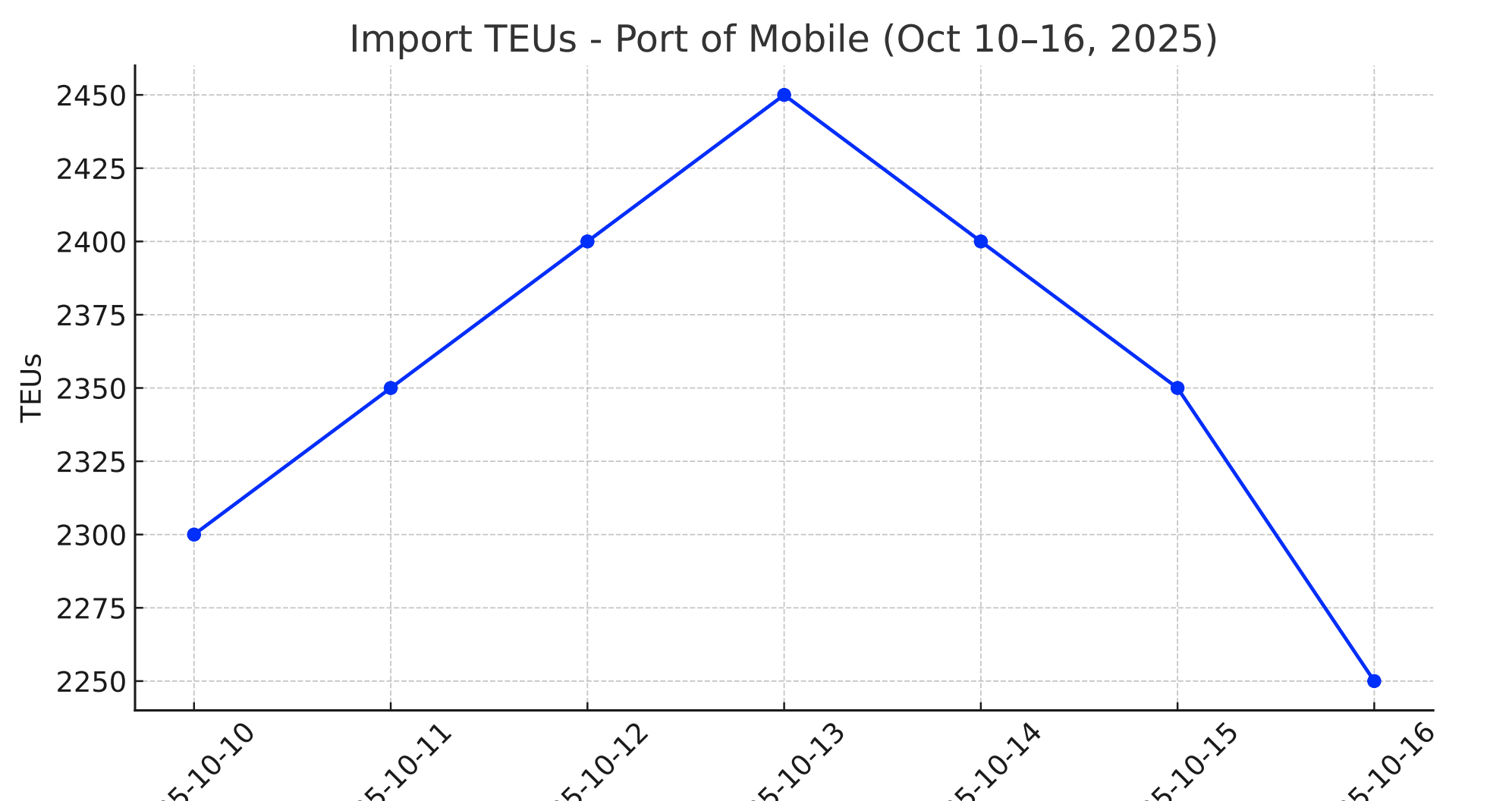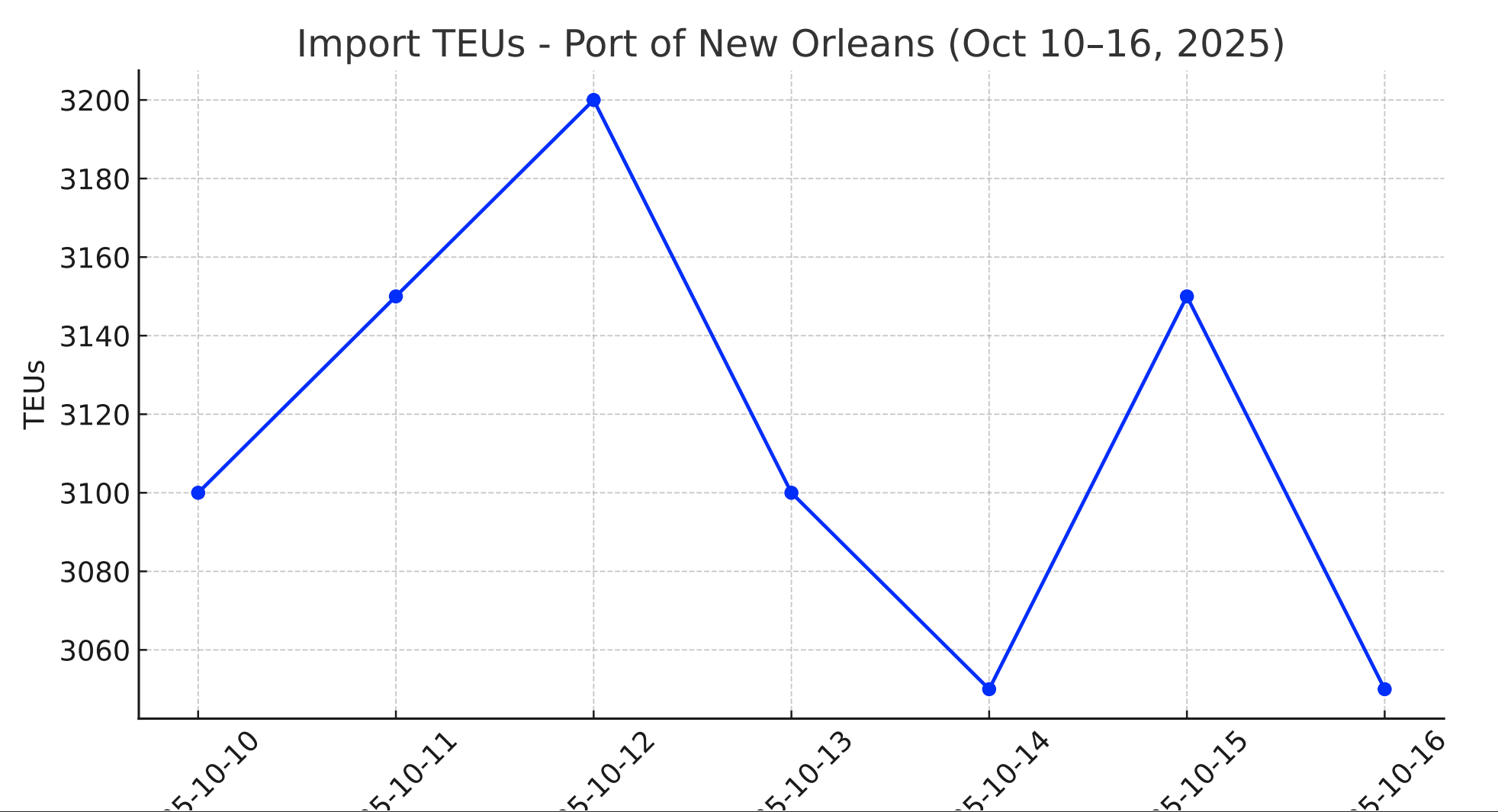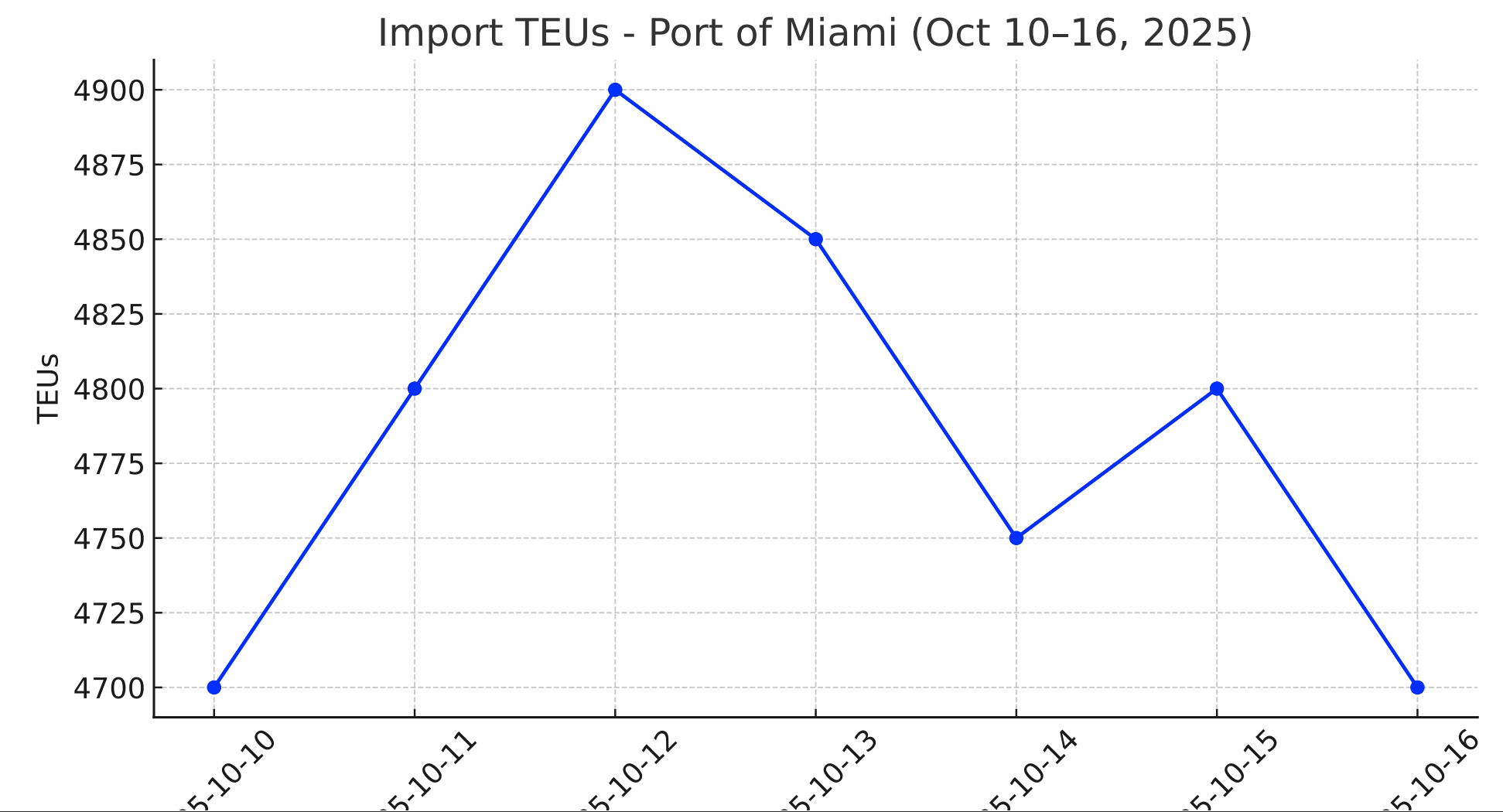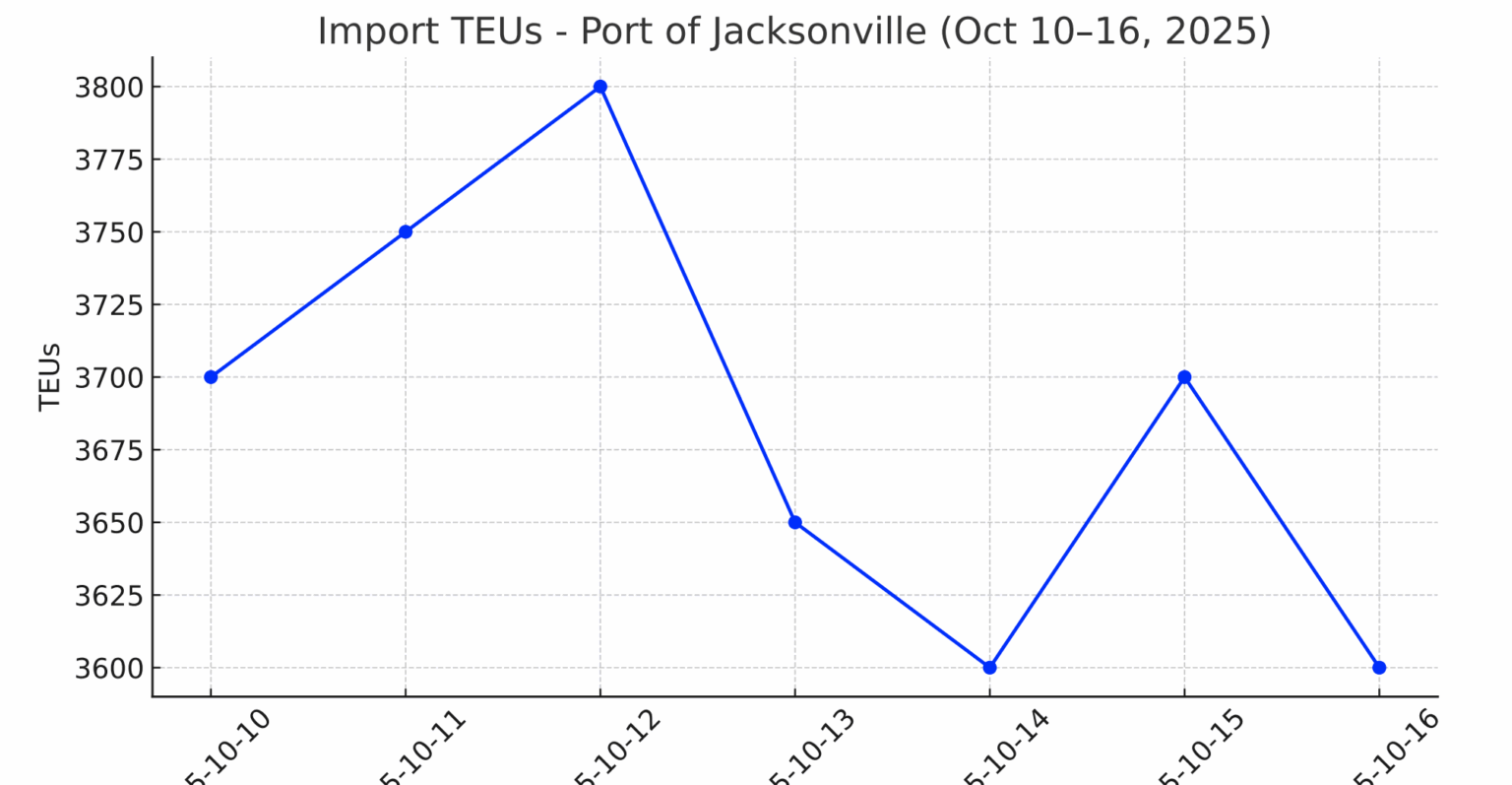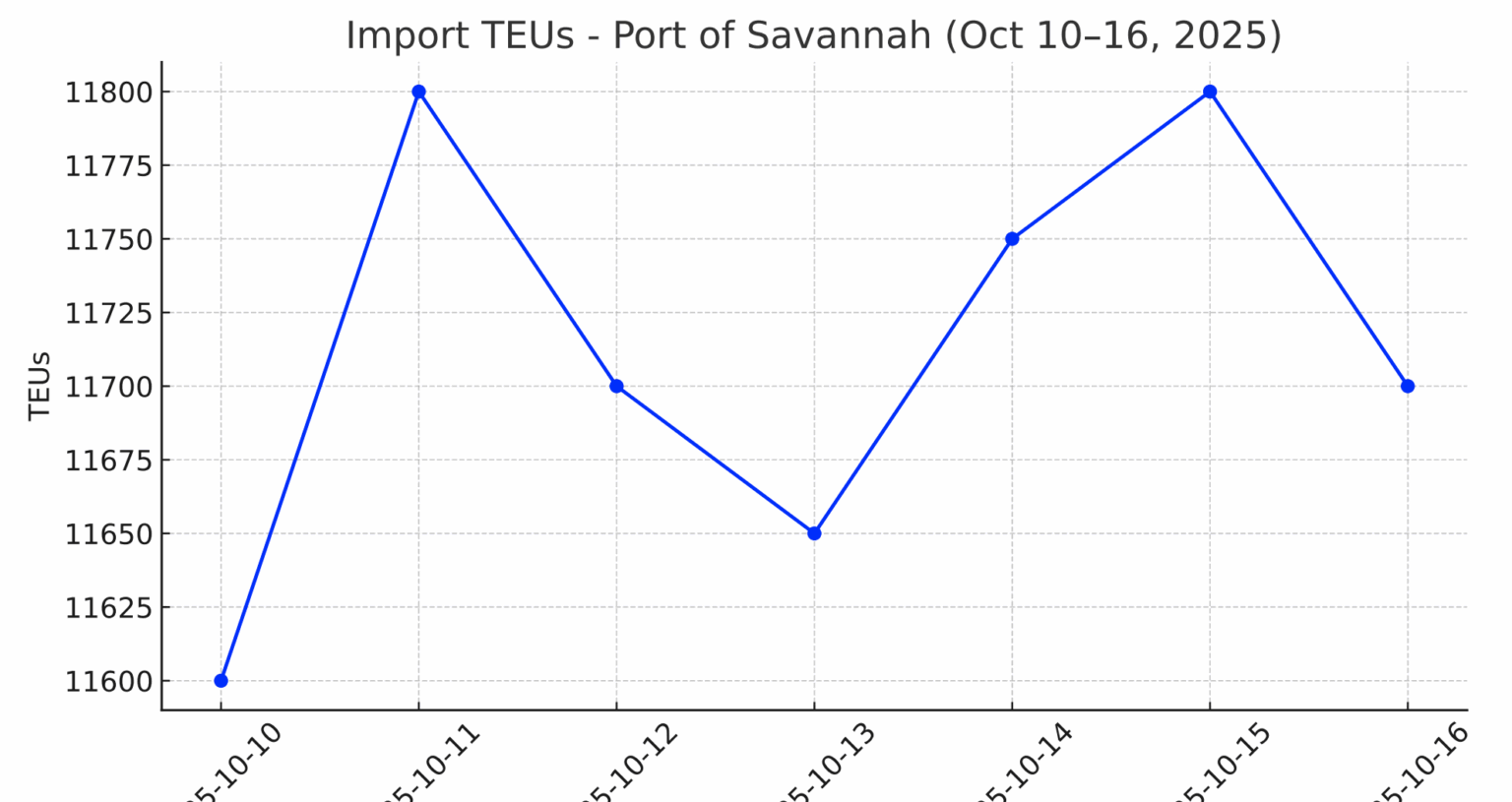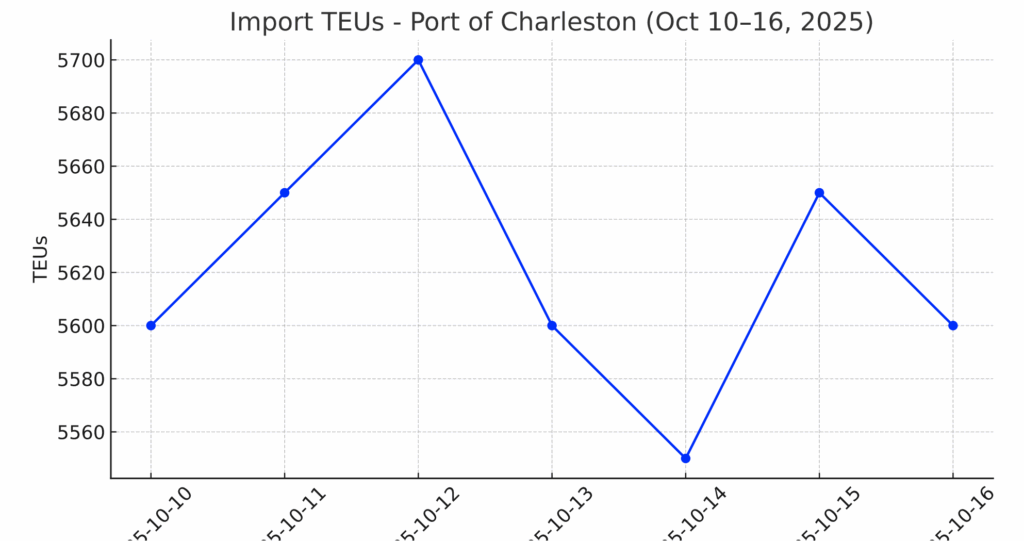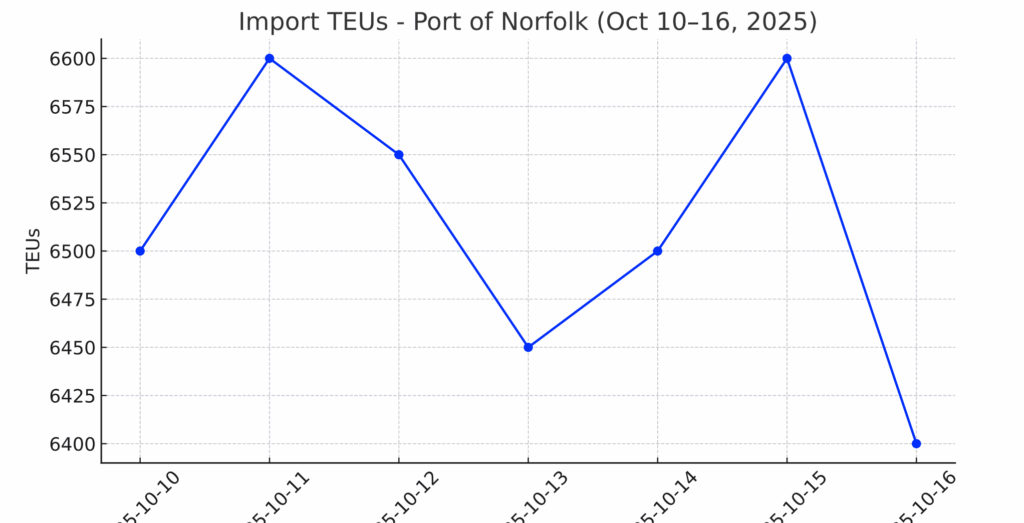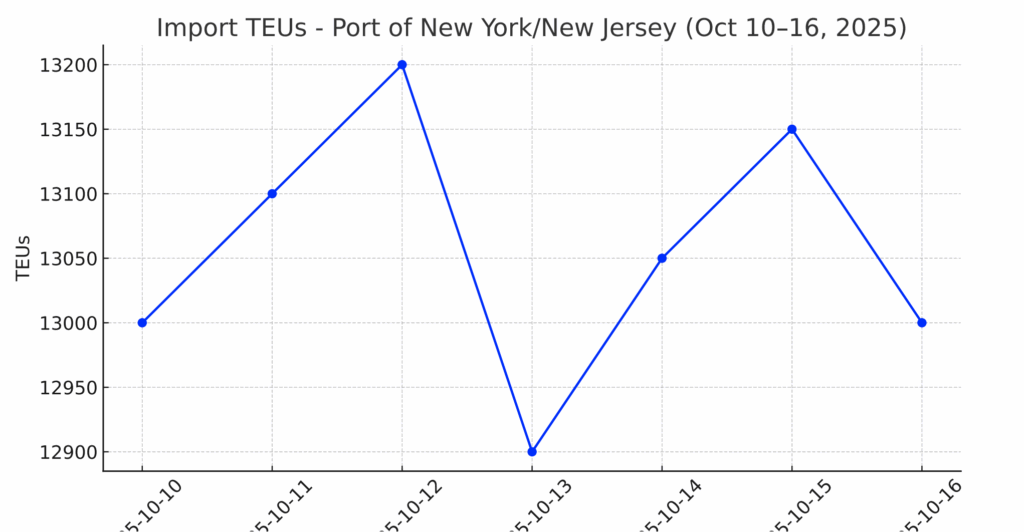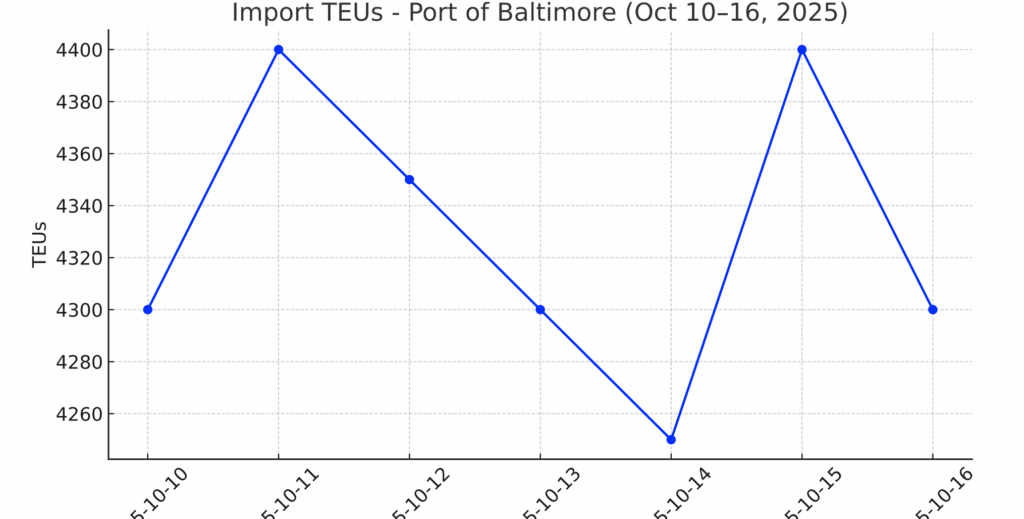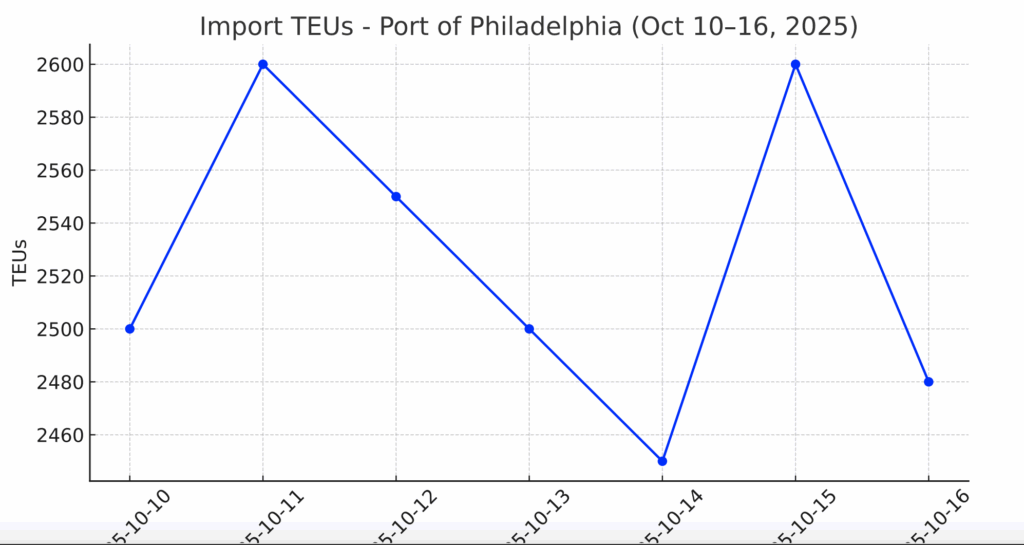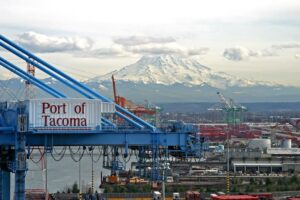
Port of Tacoma
1419 words 6 minute read – Let’s do this!
Global logistics is running hot with headlines this week — and none of them are small. From Governor Newsom’s high-stakes veto that keeps California’s automation future in union hands, to the escalating U.S. – China maritime trade clash now spreading from tariffs to port fees, every move is tightening the screws on global supply chains. Add sweeping new crane tariffs and a federal shutdown straining air cargo operations, and the freight world is once again proving it never takes a timeout. Stay ahead of the volatility and get the full story behind the headlines — follow Port X Logistics on LinkedIn for the inside scoop, or get our Market Updates every Thursday straight to your inbox at Marketing@portxlogistics.com.
California’s Governor Gavin Newsom made waves on the West Coast this week by rejecting Senate Bill 34 — legislation that would have effectively frozen new automation at California’s ports. The bill aimed to block automated cargo-handling equipment from connecting to the power grid, but Newsom’s veto keeps automation decisions inside the long-standing International Longshore and Warehouse Union (ILWU) – Pacific Maritime Association (PMA) collective bargaining process rather than state control. The ILWU sharply criticized the move, calling it a blow to dockworker families and warning it will cost jobs. Union President Robert Olvera Jr. accused the governor of damaging trust with labor and said clean-air goals shouldn’t come at the expense of port jobs. Port employers, meanwhile, applauded the veto as a win for modernization and competitiveness. The PMA and PMSA said it reaffirms that bargaining — not politics — should decide how technology evolves, and that efficient, innovative terminals are critical to California’s role in global trade.
Automation at West Coast ports isn’t new. Since a 2008 contract allowed terminal operators to adopt it in exchange for higher wages and benefits, sites like Long Beach Container Terminal and TraPac LA have gone fully automated, with APM LA partially following. The ILWU has long fought to limit expansion, arguing it erodes work opportunities. Environmental policy remains part of the fight – Pacific Merchant Shipping Association (PMSA) contends that tying clean-air goals to anti-automation rules could slow progress, since modern automated systems are often cleaner and more efficient. The ports of LA and Long Beach recently reached a new cooperation deal with the South Coast Air Quality Management District (AQMD) — an initiative that could have been jeopardized had SB 34 passed. For shippers, the short-term impact is stability. Terminals can continue investing in new technology without waiting for Sacramento’s green light, and California’s ports avoid another layer of regulatory uncertainty. But the underlying labor tension isn’t going away. Expect automation to resurface in the next ILWU-PMA contract cycle as both sides negotiate how far modernization can go — and at what cost to jobs.
The U.S. and China have opened a new front in their trade war — at sea. Both countries began imposing reciprocal port fees this week on vessels tied to each other’s shipping and shipbuilding sectors, escalating friction across global trade lanes. Nearly 13% of the world’s container fleet could be affected, with carriers rerouting, re-flagging, or selling voyages mid-trip to dodge costs. The U.S. says the fees curb China’s dominance in maritime logistics; Beijing calls them retaliation. Analysts warn the measures could distort container and energy trade just as the holiday import rush peaks.
The U.S. Trade Representative announced sweeping new tariffs on Chinese-made cranes and chassis, effective November 9th, citing unfair trade practices. Combined with existing duties, total levies could reach 125–270%, hitting ZPMC — which supplies most U.S. terminals. The move mirrors China’s new port fees and aims to boost U.S. shipbuilding. The plan also adds fees on foreign-built vehicle carriers and removes a rule tying LNG export licenses to foreign vessels, with public comments due November 12th.
As the government shutdown drags into its third week, more than 13,000 U.S. air traffic controllers are now working without pay — and stress levels are soaring along with flight delays. According to Transportation Secretary Sean Duffy, staffing issues are responsible for over 53% of U.S. flight delays, up from just 5% in normal times. With the FAA still short roughly 3,500 controllers and the TSA stretched thin, the nation’s air cargo network is feeling the strain. Planes are getting held, diverted, or delayed, leaving time-critical shipments stuck on tarmacs or in warehouses while air traffic and ground handlers scramble to catch up. That’s where Carrier911 comes in. Our expedited ground network bridges the gap when the skies stall — providing immediate recovery from any U.S. airport and same-day delivery to destination. While federal operations stall, our dispatch and carrier teams remain fully staffed and on the move 24/7. We coordinate directly with airlines, handlers, and consignees to recover freight fast, keeping supply chains flowing when every hour counts. From AOG parts and high-value cargo to time-sensitive deliveries, Carrier911 stands ready to act as your ground control when air control falters. If your freight is grounded, we’ll get it rolling. Contact info@carrier911.com to activate emergency airport recovery or hotshot capacity anywhere in the U.S.
TEU’s are up 2.24% over last week, with majority coming into Los Angeles 13.1%, New York/New Jersey 12.7% and Long Beach 12.6%
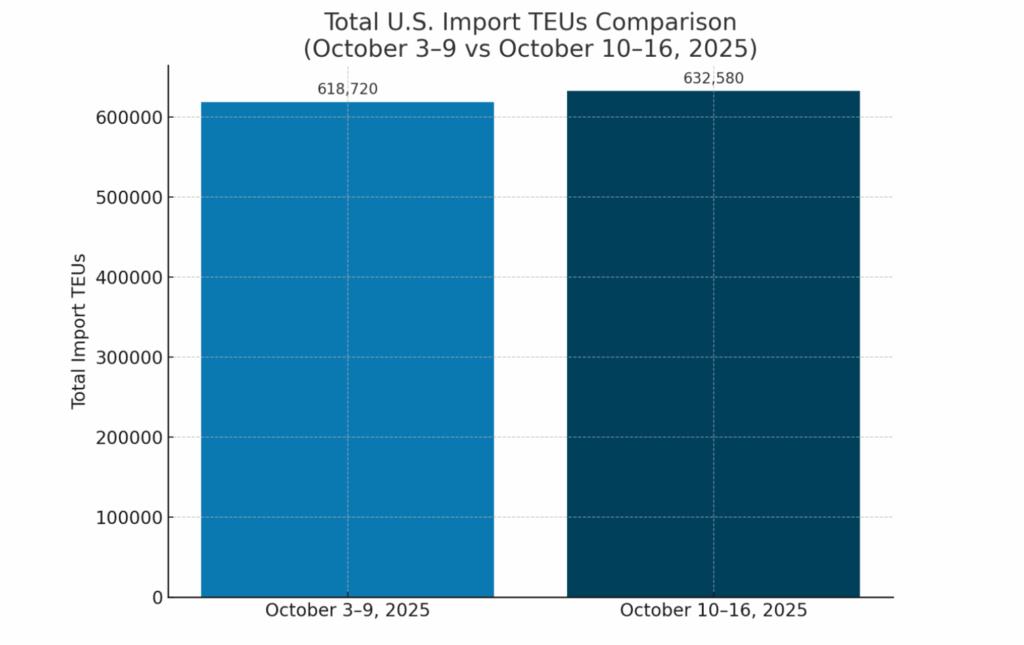
What’s happening at the ports and rails?
You can find all the information on the below link where we cover port congestion, chassis issues and capacity lead times weekly at all U.S. and Canada Ports and rail heads on our website – click on the link below
Norfolk Southern is deploying its new Thoroughbred Resource Planning System (TRPS) network-wide after a year of testing. The goal: reduce variability by standardizing train sizes and scheduling. Shippers will now need reservations for all ingates, with a target of 85% daily utilization. Expect tighter appointment discipline and limited flexibility during rollout — especially for small-volume or just-in-time shippers.
The rollout schedule is as follows:
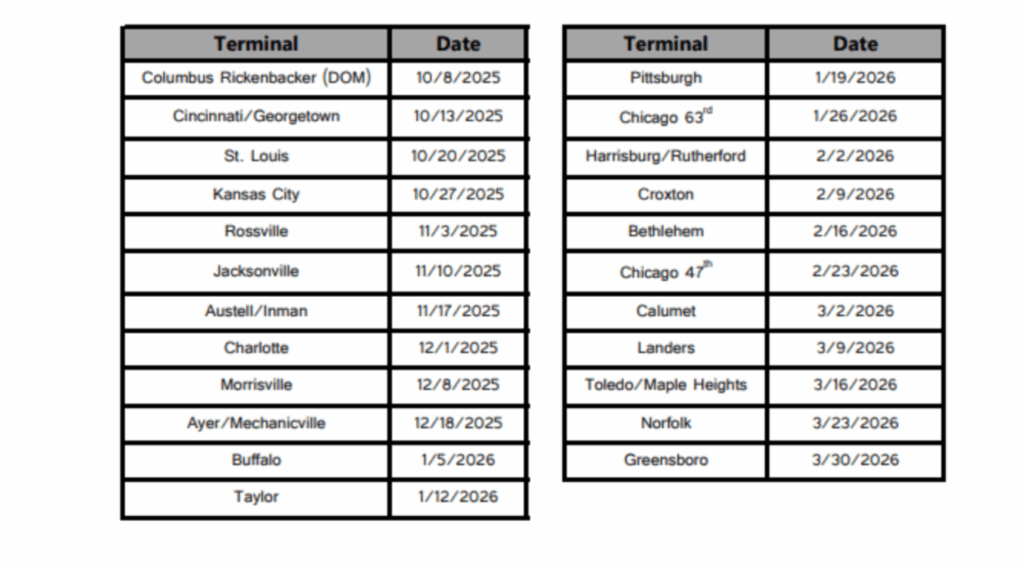
Seattle/Tacoma: There’s a schedule update for Terminal 18 showing revised vessel ETAs and a daily vessel receiving cutoff at 1600 hrs (4:00 PM) unless noted otherwise. The notice warns that late gate approvals or special requests may not be visible in general published cutoffs, so stakeholders are urged to check with SSL for updates. Our Seattle–Tacoma team is growing fast — with 11 new drivers, robust drayage capacity, and a warehouse crew built for speed and precision. From fast-turn transloads to high-volume port moves, we’re equipped to handle it all. When market conditions change, resilience and reliability make the difference. That’s exactly what our SEA/TAC operation delivers — dependable infrastructure, the right equipment, and a team that knows how to move freight efficiently through the Northwest. Want to see how routing through Seattle and Tacoma can strengthen your network? Reach out to letsgetrolling@portxlogistics.com — our crew is ready to roll.
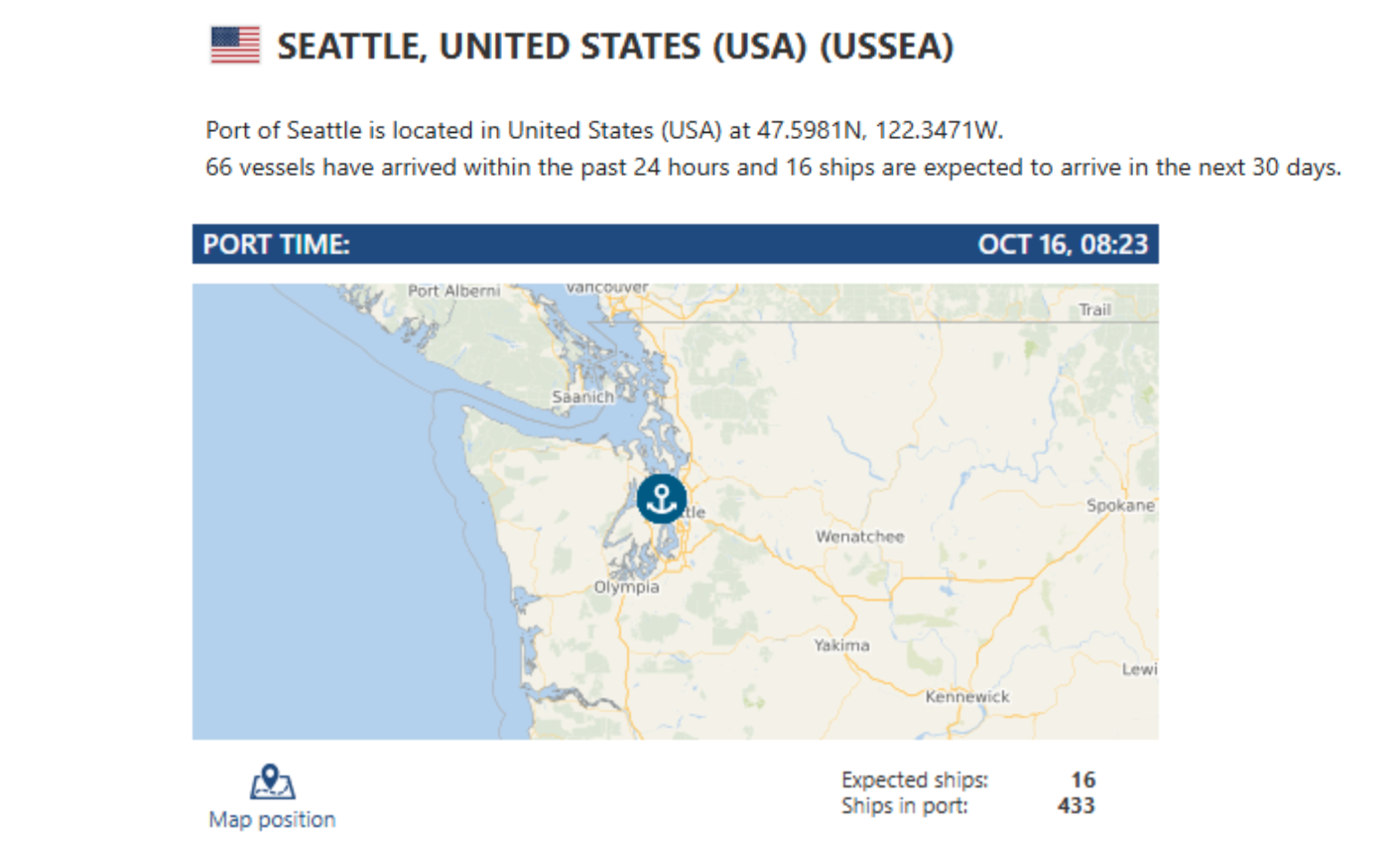
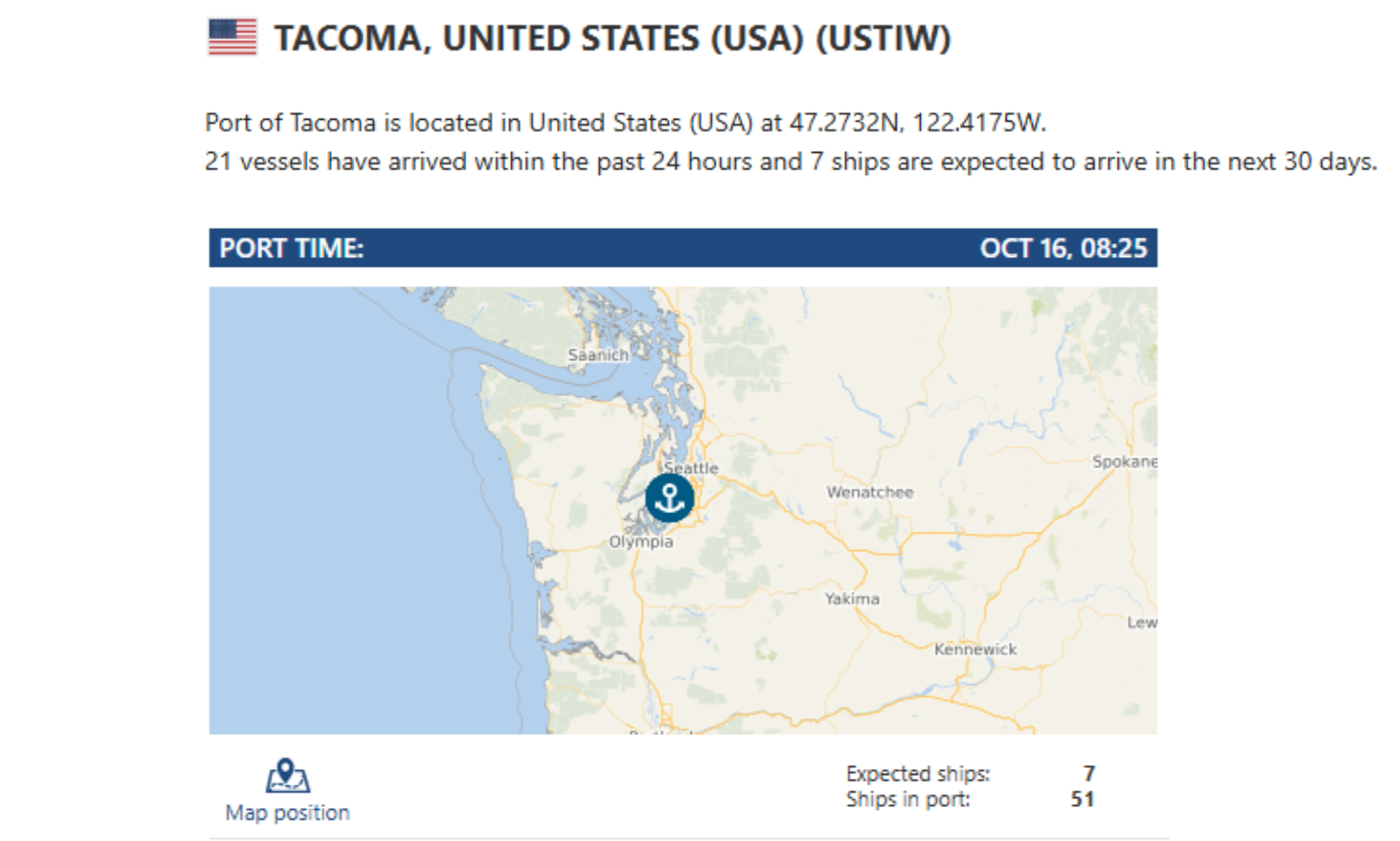
Did you know? They said Sasquatch was just a myth — until he joined the logistics game. Now, he’s not hiding in the woods… he’s hauling through Snoqualmie Pass with Port X Logistics, proving that even legends know who to call for top-tier drayage and truckload service. Turns out, Sasquatch has traded in life as a myth for life on the move — joining the Port X team to keep freight rolling through Washington’s toughest mountain pass. From drayage out of the ports of Seattle and Tacoma to full truckload runs east of the Cascades, Bigfoot became the ultimate road warrior. No storm too fierce, no pass too steep — he got the job done.
When an AOG emergency hit and a critical shipment was stranded on I-90, Carrier911 got the call. Who else could power through blinding snow and dense forest like it was a Sunday stroll? The dispatch board flashed one name: Sasquatch. With his monster-sized rig, superhuman torque, and legendary GPS instincts (don’t ask how he knows the backroads — he just does), the freight made it on time, and a new legend was born.
Now, Sasquatch isn’t just a myth — he’s the official mascot of Carrier911, the hero of the highways, keeping freight moving where others fear to tread. If you spot a giant figure behind the wheel near Snoqualmie Pass, give him a wave… or better yet, book your next drayage, truckload, or expedited delivery with us! — the team that even legends want to work for. Letsgetrolling@portxlogistics.com
Import Data Images
